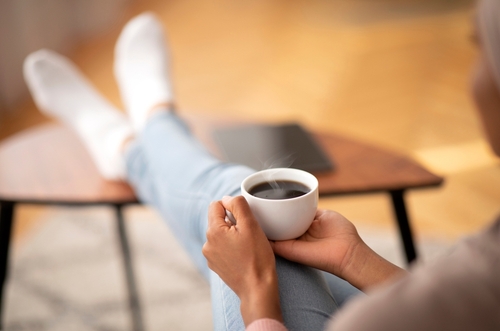When Energy Meets Metabolism
If you’re using GLP-1 therapy to support weight or blood-sugar management, you’ve probably wondered how your daily coffee fits into the plan. Caffeine can feel like a harmless pick-me-up, but when your body is adjusting to a medication that changes digestion and appetite, that extra stimulant deserves a second look.
The good news: caffeine and GLP-1 medications can usually coexist safely. Still, understanding how they influence one another can help you avoid discomfort and get the best results from both.
What Happens in the Body
GLP-1 medications slow digestion and calm appetite signals so you feel full sooner and longer. Caffeine does almost the opposite — it briefly increases alertness, heart rate, and digestive movement. When combined, the two can interact in ways that amplify certain sensations, both positive and negative.
You might feel more energized and focused, but you might also notice jitteriness, nausea, or stomach sensitivity if you overdo it.
Potential Upsides
- A mild energy boost: A small amount of caffeine can help offset the sluggishness some people feel when starting therapy.
- Enhanced alertness: Used thoughtfully, caffeine can improve focus during the day without affecting GLP-1 effectiveness.
- Short-term metabolic support: Some research suggests caffeine briefly increases calorie burn and circulation, though the effect is temporary.
Possible Drawbacks
- Digestive irritation: Because GLP-1 therapy slows gastric emptying, caffeine may aggravate nausea or reflux if taken on an empty stomach.
- Sleep disruption: The body processes caffeine more slowly on certain medications, making late-day consumption more likely to interfere with rest.
- Increased dehydration risk: Both caffeine and GLP-1 therapy can influence fluid balance, so water intake becomes even more important.
- Overstimulation: Too much caffeine can make your heart race or heighten anxiety, particularly during early weeks of treatment.
Finding the Right Balance
You don’t have to give up your morning coffee — just use it intentionally:
- Start small. Keep caffeine below roughly 300 mg per day (about two small coffees).
- Pair it with food or protein. This helps buffer acidity and steadies blood sugar.
- Stay hydrated. Drink a glass of water before and after caffeine.
- Limit afternoon doses. Stop intake six to eight hours before bedtime.
- Observe your body. If you feel tense, dizzy, or nauseated, scale back and reassess with your clinician.
Bottom Line
Caffeine can fit comfortably into a GLP-1 routine if it’s approached with moderation and awareness. Your body’s tolerance, hydration level, and digestive comfort are your best guides.
At Easylose, we encourage mindful habits — not rigid rules. Every body reacts differently, and the goal is steady progress, not perfection.


.jpg)

